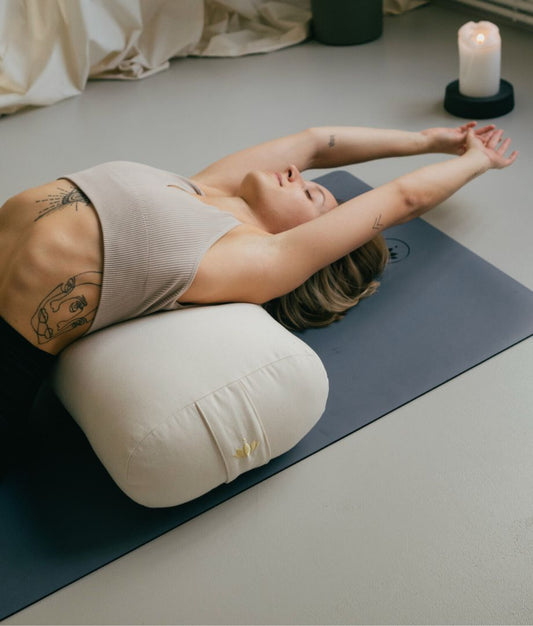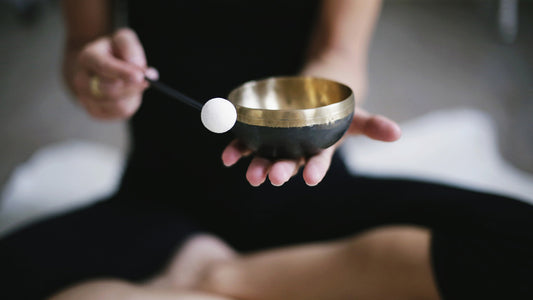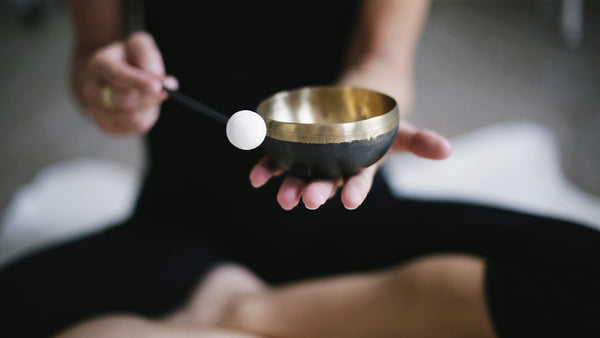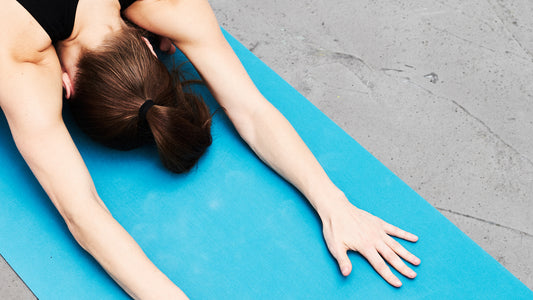
Set-Offers
Save when you buy a set
Shopping cart
Your shopping basket is empty
Yoga

Meditation
Yoga Sets

| Meditation
All life is vibration - and when the human being is in harmony, then he vibrates effortlessly and healthily with life. Healing with sounds is already mentioned in the Vedas, the oldest sacred texts in India. Modern science confirms the health-promoting effects of music, sound and rhythm. With singing bowl meditation we can easily bring this effective method into our living room.

For generations, people have known about the healing power of sound. Shamans and medicine men once asked discouraged or depressed people, "When did you stop dancing? When did you stop singing?” (after Gabrielle Roth). Today, numerous studies prove the positive effect of music and sound on various illnesses and complaints, for example in stroke patients, tinnitus, borderline disorders, depression, addiction or attention deficit disorders.
An instrument that has been associated with meditative practice in Nepal, India and Tibet for centuries is the singing bowl. Historians suspect that the melodious bowls were initially used as kitchenware and that the beautiful sound was only a minor matter. Today we know about the positive effects of their sounds and vibrations. On a physical level, blood circulation is stimulated, self-healing powers and stress reduction are promoted. Depending on the tonal range, different areas can be affected. On a spiritual level, the gentle vibrations can bring about deep relaxation. Overall, the sounds have a harmonizing and calming effect. During a sound massage, the chakras are also addressed with different bowls.
“The rhythm of the body, the melody of the mind
and the harmony of the soul produce the symphony of life.”
BKS Iyengar
Since music and sounds are something that we humans react to intuitively, they can often make it easier to get started with meditation. Each of us has already had the experience of being deeply touched by music and knows how intensively melodies, rhythms and sounds can affect our emotional world. Especially when people find it difficult to let go of everyday worries, to calm down and to start with meditative exercises, singing bowls can help. For advanced learners, the familiar sound is an impulse that calls attention inwards.
In the beginning it is enough to own a singing bowl to start the practice. The collection can be expanded over time. When choosing, you should take your time and try out a few high-quality bowls until you find the one whose tones you find particularly appealing at the moment. This can change again and again over time and you can trust your own intuition here. As a rule, we always choose the singing bowl that best suits our physical and mental needs.
Once you have found the right bowl, it is advisable to look for a quiet, undisturbed room and a time that is harmonious. Some like to start the day silently, but with gentle sounds. Others find it nice to “end” the day. A comfortable meditation cushion or a yoga mat on which you can stretch out comfortably is helpful to really get involved in the practice and to be able to relax.
In order to conjure up a beautiful tone from the singing bowl, you should hold it on the palm of your hand and avoid touching the sides so that it can vibrate freely. A suitable clapper must be selected for striking. A basic rule is: The larger a bowl is, the softer or thicker the padding should be. It is best to try out different clapper (e.g. padded with leather or felt) when buying the bowl.
The bowl is struck on the outside, just below the edge of the bowl. You should hold the beater parallel to the side wall of the bowl and pull it back immediately after hitting it. The right posture and intensity needs to be practiced a bit: a hit that is too hard sounds unpleasant, a hit that is too soft will hardly be audible.
With a little practice, a singing bowl can also be made to "sing" by rubbing it: The clapper is guided along the upper edge in a circular motion and with a little pressure. In order for the bowl to sing evenly, pressure and speed must be right.
When the bowl begins to ring, the eyes can be closed and attention is directed to the tones and vibrations of the instrument. Usually these are also physically noticeable. Depending on the pitch, the effect will be more noticeable in one or the other body region than elsewhere. The sound waves can also be visualized and directed (eg in places where there is tension). If a particular chakra is to be worked on, the meditator's focus can be directed there. Another option is to place the bowl on a specific part of the body - like in a classic sound massage.
If you want to soothe a restless mind, you can always draw your attention to the sounds of the bowl - until it has faded away completely. Then the next hit follows. In this way, more peace, concentration and harmony can gradually develop.
If you want to integrate the singing bowl into your yoga practice, you can use it to give the exercise unit a clear beginning and end by striking it a few times before and after. Gradually the sound becomes a signal and the transition from everyday life to practice is easier and faster. Or the bowl is made to sound again and again to accompany meditative exercises or Savasana.
Have fun practicing and experimenting!

We humans like to keep things simple. But we are much too complex creatures for standard solutions. In order to be able to positively influence our...
Continue reading
Osho's active meditations are optimally suited to our modern world. If you're having trouble sitting in stillness and are plagued by anxiety and e...
Continue reading
There are no comments yet. Be the first to leave a comment!